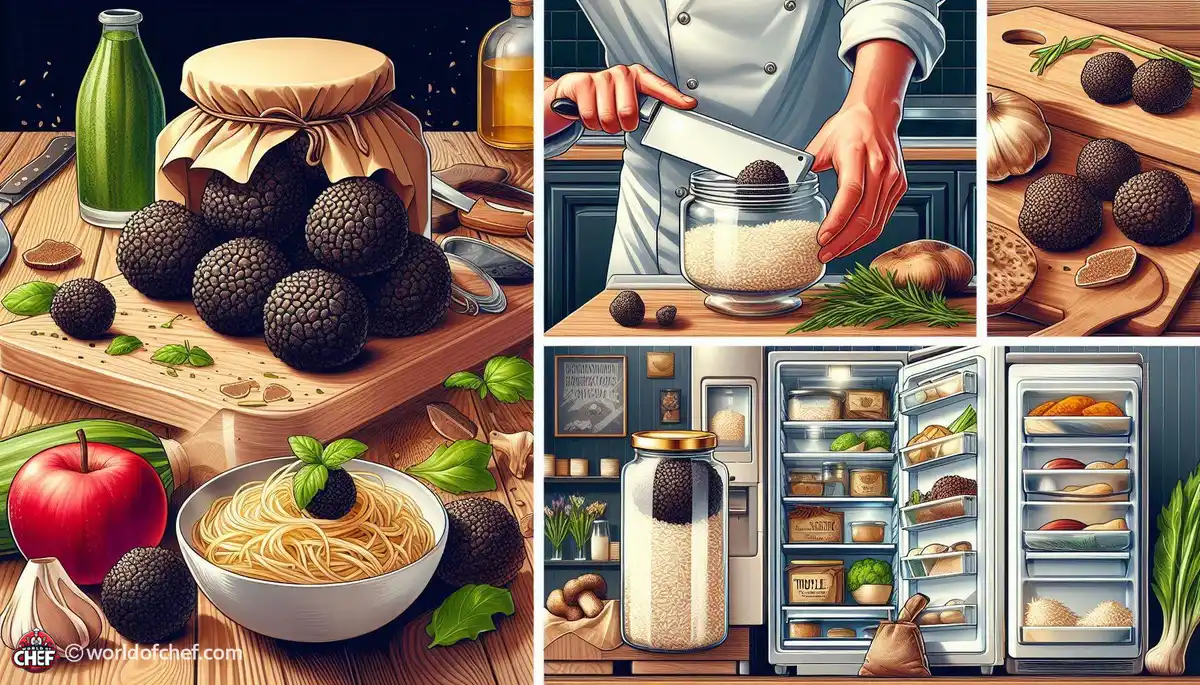
Preserving the Essence: Mastering the Art of Storing Truffles
Serenity McFall - Oct 12, 2024 - 6 min read


Homemade truffles are a scrumptious treat that can be savored to make any event worthwhile with their intense, indulgent flavors. But the question often posed is, "How long do homemade truffles last?" The answer is not that simple as one would imagine. There are several factors involved when it comes to determining the shelf life of these delicious goodies.
First and foremost, the ingredients used in making homemade truffles play a huge role in determining their shelf life. The truffles made from fresh, high-quality ingredients will normally have a longer shelf life than those made from low-quality ingredients. Additionally, the presence of perishable items such as cream or butter can impact how long the truffles will stay fresh.
The shelf life may also depend on the process through which preparation and storage take place. Truffles are probably more likely to be durable when well-tempered and stored in a cool, dry place as compared to those subjected to heat, moisture, or air. Proper packaging like that in an airtight container or vacuum-sealed bag can add up to the shelf life of homemade truffles by avoiding oxidation and absorption of moisture.
Moisture Content: This is yet another factor to consider while evaluating the shelf life of these home-made truffles. Higher moisture content in truffles leads to its spoiling as moisture favors the bacterial growth. The correct tempering of chocolates and accurate proportion of liquid add-ons like cream or liqueur are essential.
The type of chocolate used might also affect how much moisture the truffles contain. Dark chocolate often contains less sugar than both milk and white chocolate; it typically also has lower moisture content. This will make darker chocolate truffles that have a longer shelf life than the rest.
Moisture content, too is added in with some of the flavorings or fillings when truffles are being prepared such as the puree from fresh fruit or liquor soaked ganache. Not only might such add flavor strength in a truffle, it would likely to be kept beyond the shortest storage duration provided if these were improperly preserved or consumed.
Proper storage is essential when considering the shelf life of homemade truffles. Ideally, truffles should be kept in a cool, dry area with no direct sunlight and any sources of heat. Truffles should be kept at ideal temperatures between 60°F and 70°F or 15°C to 21°C, as higher temperatures and lower temperatures may cause melting or blooming of chocolate.
Also, to store truffles, always keep them in an airtight container to avoid moistures and odors getting into the truffles, coming from other foods or whatever. For further safekeeping, truffles can also be wrapped in waxed paper individually or put into small candy cups before transferring to an airtight container.
If refrigerated, truffles must be brought to room temperature before serving as condensation may form on the surface. However, truffles kept in cold for too long can become dulled or develop a white film referred to as chocolate bloom; therefore, storage in the refrigerator should be minimized as much as possible.
Homemade truffles can last for weeks when properly stored, but the key to this is being able to identify spoilage to avoid eating bad truffles. Appearance is the first indicator of spoilage, usually as a change in the color or presence of mold, which shows that bacteria or oxidation have set in.
Truffles exposed to overmoisture or heat would commonly appear melted or have abnormal shapes. The other indicator of chocolate deterioration through inadequate storage or handling is chocolate bloom, which occurs when the surface of the truffles develops a dull or whitish film.
Other signs of homemade truffles gone bad include texture and smell changes. Truffles are supposed to be smooth and creamy in texture, nothing like crystallization or graininess. Textures that may have an unusual gritty or sandy feel can indicate that the chocolates have become stale and absorbed moisture.
Offensive and unpleasant smells embrace off smells such as an acid or rancid stench that may mean that the truffles are possibly spoiled by bacterial activity as well as oxidation. Once your truffles stink bad, weird or putrid and you've always had a doubt concerning, it's much more sense to err on the safer side and discard it or get rid of rather risk food poisoning.
Actually, it is not good practice to taste something that would probably be spoiled, although some may opt for taste testing to know whether it is safe to consume these homemade truffles. After all, spoiled food has the potential to bring in foodborne illness.
If the homemade truffles are bad or smell unusual, then one just has to spit it and discard the rest. Only by trusting your senses should you be able to get a good idea about when the homemade truffles are safe or unsound, so when uncertain, it is best thrown out.
It is extended to shelf life with proper packaging. Moisture absorption, as well as exposure to air, which might lead to oxidation and staleness in the chocolate, are prevented by airtight containers or vacuum bags.
Wrap each truffle in wax paper or place it in small candy cups, and then put it in a package to further protect them from moisture and odor. Seal the package tight so that as little air reaches the truffles as possible, and keep the truffles in a cool, dry place with no direct sunlight or sources of heat.
If you want to prolong your homemade truffles a few months longer, you will probably freeze them. For several months, truffles can be stored frozen; they do not lose as much quality and are thereby the best for long periods of storage.
To freeze truffles, lay a baking sheet lined with parchment paper and place the truffles in a single layer. Place them in the freezer until firm. Transfer the frozen truffles to an airtight container or resealable freezer bag, taking care to remove as much air as possible before sealing.
To serve, thaw truffles in the refrigerator overnight or at room temperature for a few hours. Never thaw any truffles in the microwave; the chocolate then melts unevenly and impacts the texture and flavor.
If you find that your truffles are stale and have lost all their shine, then do not give up on them because there are ways to refresh them back to their former glory. Refreshing of truffles: You can refresh truffles by heating them in the microwave at low power, in intervals of a few seconds or so, while stirring them frequently till they become soft and creamy.
Place the truffles in a closed container with a piece of bread or a damp paper towel overnight. They will hydrate overnight through the moisture from the bread or the paper towel and regain their texture and flavor.
Alternatively, you could melt down the stale truffles and use them as a decadent sauce or filling for other desserts such as ice cream or cake. Whichever method you use, refreshing stale truffles is a great way to salvage them and prevent food waste.
Homemade truffles are a treat that can be enjoyed for weeks if stored properly. Knowing what would influence their shelf life ensures that homemade truffles stay fresh and delicious for as long as possible, given the right precautions. Whether it is for some special occasion or just a treat to have, knowing the right way to store and take care of homemade truffles ensures that they'll make your taste buds sing with delight for days ahead.

Serenity McFall - Oct 12, 2024 - 6 min read

Julia Du - Oct 12, 2024 - 7 min read

Eloise Jester - Oct 11, 2024 - 7 min read

Frank Sato - Oct 11, 2024 - 6 min read